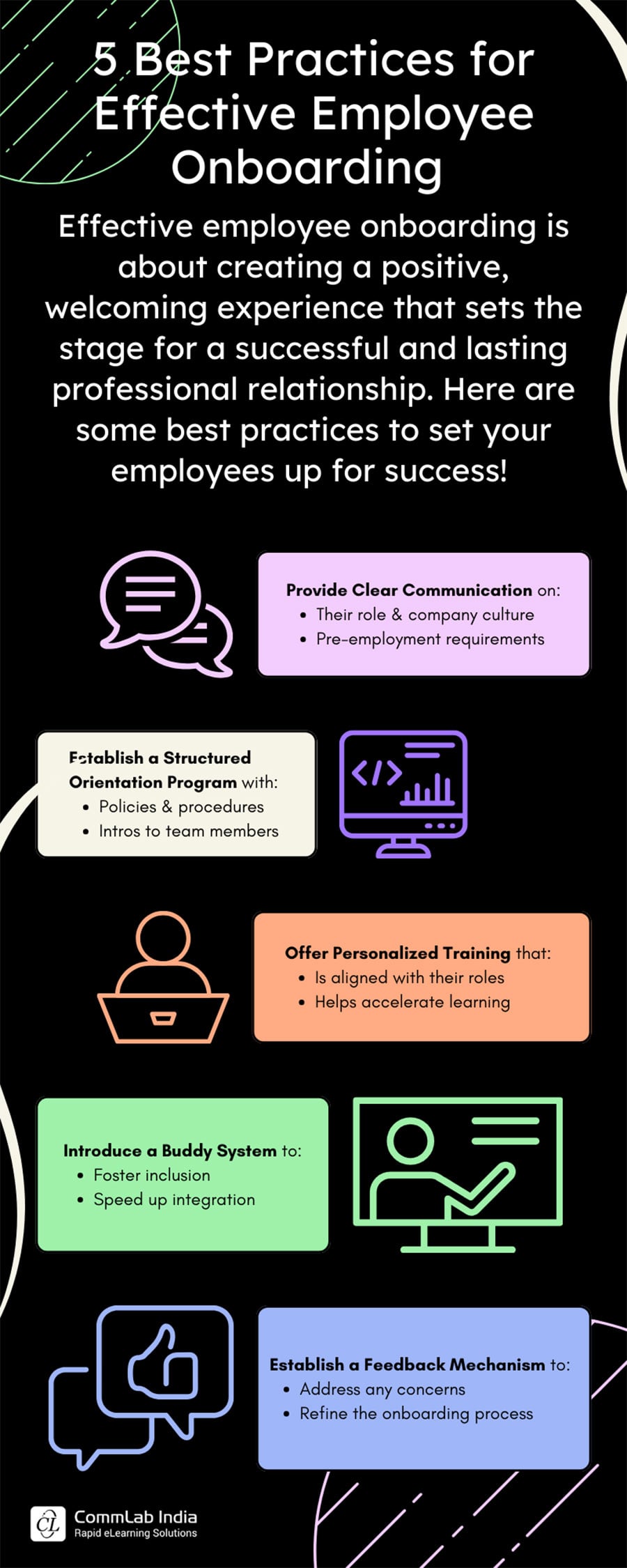Benefits and Best Practices for Effective Employee Onboarding [Infographic]
![Benefits and Best Practices for Effective Employee Onboarding [Infographic] Benefits and Best Practices for Effective Employee Onboarding [Infographic]](https://blog.commlabindia.com/hubfs/blogs/benefits-best-practices-effective-employee-onboarding-info.jpg)
I’m sure you’d agree that the feeling of stepping into a new workplace is similar to the feeling of embarking on a thrilling yet nerve-wracking adventure. From the excitement of new opportunities to the uncertainty of navigating unfamiliar territories, the range of emotions experienced during employee onboarding is as diverse as it is common. Whether it's the first day jitters or the eagerness to make a positive impression, every employee can relate to the rollercoaster of emotions accompanying the onboarding process.
In this blog, we’ll explore the benefits of effective employee onboarding for both, new employees and companies alike. Apart from that, we’ll also include an infographic that will enlist the best practices so you can ensure seamless integration of new employees into the existing company culture.
→ Download Now: Instructional Design Strategies to Design Engaging eLearning Courses
So why delay further? Let’s get ready to provide a welcoming and impactful onboarding process.
Benefits of Effective Employee Onboarding
REMINDER: Effective employee onboarding is not merely a checkbox to be ticked off but a strategic investment that yields numerous benefits for the company. Some of the benefits are given below:
Sets Clear Expectations
An effective onboarding process is a great way to set clear expectations for new hires regarding their roles, responsibilities, and performance metrics. On having a clear understanding of what is expected of them, employees can better focus their efforts on tasks that align with the organization's goals.
Enhances Productivity
This point is related to the first one. Setting clear expectations enables new hires to understand and take up responsibilities on their own. It nurtures them to be independent, accountable, and dedicated to what is expected of them instead of always being told what to do or micromanaged. Well-planned and executed employee onboarding training process plays a crucial role in boosting training efficiency. It minimizing the time needed to reach their optimum efficiency and productivity.
Better Cultural Integration
When you provide new hires with the necessary resources, information, and training upfront, they can adapt to the company culture efficiently and integrate into their roles more quickly. It saves the time they spend time feeling lost or uncertain about their responsibilities and can start making meaningful contributions sooner.
Improves Retention
Onboarding employees only to see them leave so soon isn’t a great feeling, right? Therefore, investing in a comprehensive onboarding process is a must. It plays an important role in employee retention because when new hires feel valued and supported during their initial days and weeks on the job, they are more likely to remain committed to the organization. This sets the stage for reduced turnover costs and fosters a sense of loyalty.
Boosts Engagement
A positive onboarding experience fosters a sense of belonging and engagement among new hires. Providing them relevant, engaging onboarding training makes your employees feel welcomed and supported. This motivates them to perform well. Apart from this, it also promotes better team understanding and collaboration.
5 Best Practices for Effective Employee Onboarding
Parting Thoughts!
New hires are the new opportunity to give your organization a desired push of energy and vitality. Ensuring effective onboarding enables you to maximize productivity, build trust and harmony, and drive your organization toward success. Now that you know the benefits and best practices, why wait any longer? Incorporate the best practices for effective employee onboarding into your strategy and see the results. Talking about strategy, instructional design strategies play a vital role in creating engaging, learner-centric courses. Learn more about them in the eBook below.







